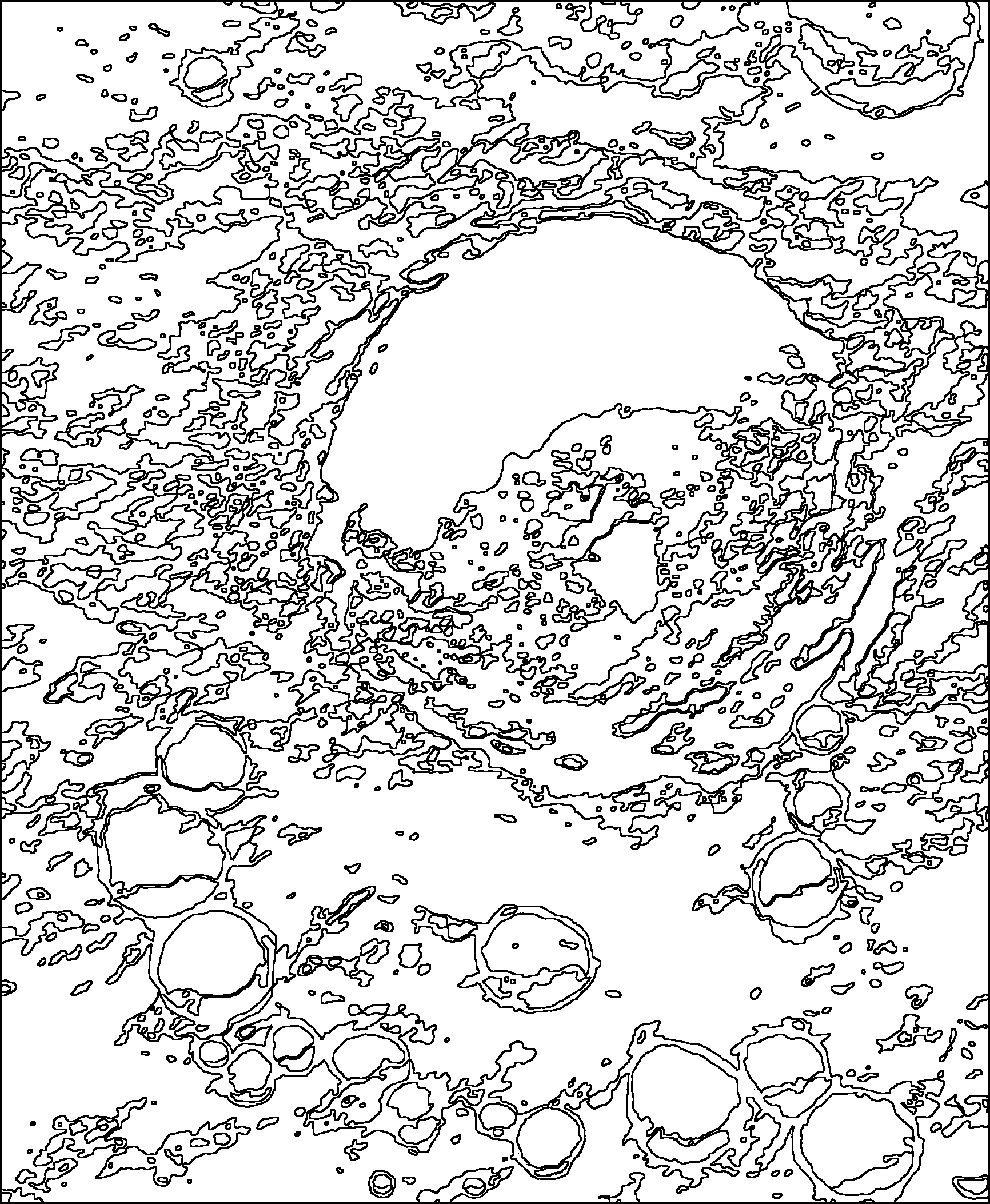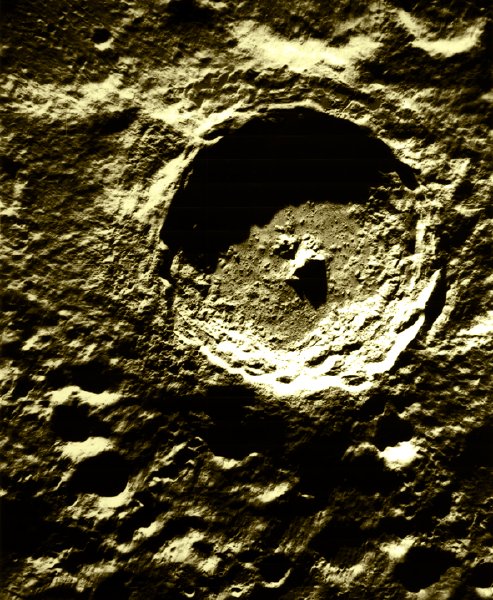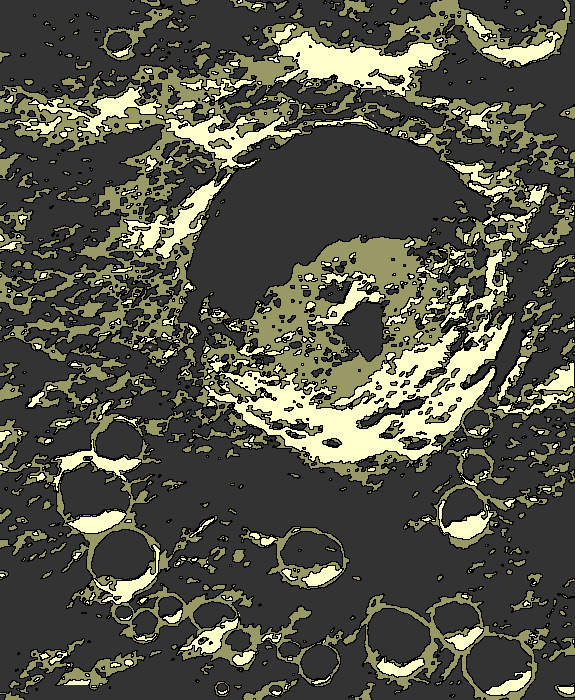Tycho Crater, Moon
Steven Dutch, Professor Emeritus, Natural and Applied Sciences, University of Wisconsin - Green Bay
Tycho is one of the most conspicuous landmarks on the Moon. It is much younger than most craters on the Moon. Samples of ejecta returned by Apollo astronauts were dated at 108 million years, during the time of the dinosaurs. Like most young craters, Tycho is surrounded by bright rays of freshly pulverized dust. Some of Tycho's rays stretch halfway across the Moon. However, the immediate area around Tycho is darker than average, possibly because it was covered by darker material excavated from deeper in the crater.
Tycho is 53 miles (85 kilometers) in diameter. Like most medium-sized craters on the Moon, Tycho has a prominent central peak and terraces along the inner walls. These features formed as the compressed lunar crust rebounded after the impact. The compressed floor rebounded to throw up a central peak, and the overly steep crater walls collapsed along curving faults to form the terraces.
The surroundings of Tycho are ancient, heavily cratered crust more than 4 billion years old. This area is crater saturated, meaning every point on it has been cratered at least once. The craters here formed from the final impacts during the accretion of the moon.

Original Scene
 (NASA image)
(NASA image)
Possible Coloring

Return to Geology Coloring Book Index
Return to Professor Dutch's Home Page
Created 17 December 2007, Last Update 15 January 2020